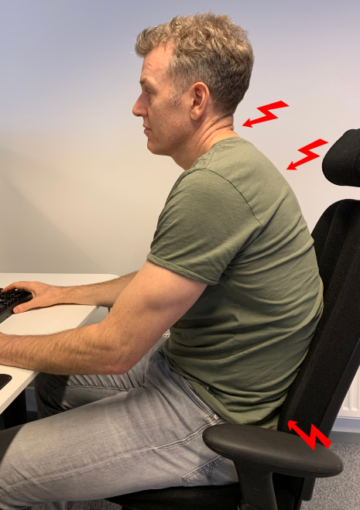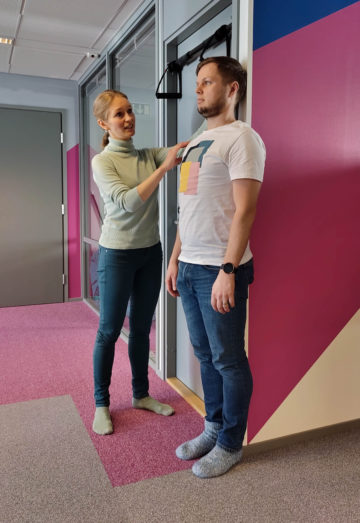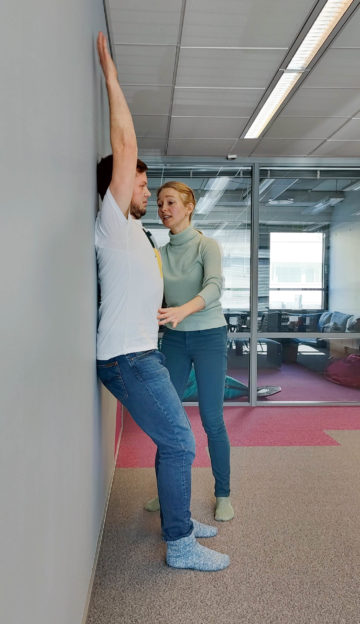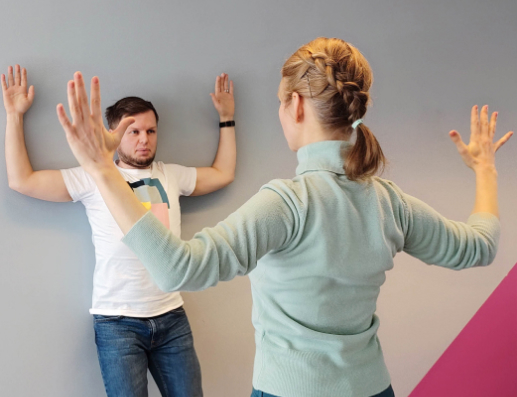Computer work is considered to be physically light work. From a physics point of view, it doesn’t really count as work at all. This lack of movement has consequences. Not moving, our posture may degenerate prematurely and we may suffer pain. So, while programming is not work, it can be hard on the body.
When blood flow suffers, so does the work flow
Lack of blood flow has a number of side-effects in muscles, such as a lack of oxygen and the build up of lactic acid. This leads to aches, pain, and muscle weakness. It is important to notice that these effects can occur in any position. So if you are proud you stand like a coding warrior all day or sit in one of those saddle chairs (a coding cowboy?), don’t congratulate yourself yet. In any static position, joints are unsupported by your muscles, particularly if collapsed into the position of least resistance. Large muscle groups may become imbalanced, unnaturally lengthened or shortened, depending on the position. Apart from these physiological changes, you just become increasingly tired and irritable from insufficient blood circulation–brain included. No amount of energy drinks will suffice. It gets harder to concentrate on coding, you drop out of meetings, and perhaps you find yourself surfing Hacker News or searching for just the right gif to post in Slack instead of programming. When you return to work the next day, you will wonder why you wrote such buggy code the day before. Therefore, bad posture has serious consequences for you and your company.
The particular badness of sitting
While sitting, our normal posture changes. The pelvis tilts slightly backwards, causing the lower back’s optimal inward curve to straighten or even to round. There is a chain reaction as the upper back rounds and the shoulders and head pull forward. The lightning bolts in the image below point to the three key problem areas when sitting.

When poor posture becomes a habit, a vicious cycle ensues. Here are some of the ways you are screwed up by sitting:
- Chest muscles become tensed, potentially leading to numb hands or pain along the arms.
- Your shoulder blades stick out and, yeah, they may stay that way.
- Muscles supporting the shoulders weaken, leaving you with a wimpy upper body.
- Your ‘desk neck’ puts a big strain on the neck and spine. As you try to keep eyes on the screen, the upper neck tends to bend backwards shortening the upper neck muscles. Headaches and dizziness may follow.
- Irreversible changes in the posture of head and neck and spine may occur. This can even include the development of a ‘neck hump’, a layer of fatty or bone tissue.
The key point here is that you are changing the anatomy of your body. These are changes you will have to live with. Yep, you may be partly screwed already. By now you should be concerned, even scared, and want to do something about it. Here are two simple tests you can perform to debug your posture, followed by some exercises to improve the situation.
Wall test one: neck and upper back mobility
Check your current posture by standing against a wall with your upper back, and buttocks in contact with the wall. Place your heals about 10cm away from the wall. If you find your head difficult to keep in contact with the wall, this is an important warning sign and you should do exercise below. If it is impossible, you are screwed up but there is still hope if you do the exercises below at least every three hours.

Test one exercise: Neck and head position improvement
If you noted warning signs or are even screwed, do this exercise daily, preferably multiple times. With your chin tucked in you retract or push back your head and hold for two seconds, releasing. Repeat ten times.
Wall test two: Shoulder and upper back mobility
Check your shoulder and upper-back mobility by, again, standing against a wall with your upper back, buttons and head (if you can) in contact with the wall. Place your heels 15-20cm from the wall. With your palms facing inwards (towards the wall in the starting position) and your elbows straight, raise one arm at a time overhead to see how close the back of your hand is to the wall. Make sure you don’t cheat by arching your back. If you touch the wall with the back of your hand, you are ok. If you can only touch with the tips of your fingers, there is work to do with exercises below. If you can’t touch at all, you are screwed up but there is still hope if you do the exercises below every three hours.

Test two exercise A: Shoulder and upper back mobility
See the video for the starting position. Raise both arms above your head with thumbs pointed up. Do eight pulses backwards towards the wall without arching your back.
Test two exercise B: Shoulder and upper back strengthening
See the video for the starting position. Lower both arms with forearms nearly touching the wall until your elbows are close to your side and shoulder blades pushed together. Return to the starting position the same way. If you have shoulder pain, work on the mobility exercise only.
We hope this article brought some awareness and perhaps some concrete steps towards a healthier posture. If nothing else, you probably sat up while reading it. And if you prefer chiropractic treatment to doing the hard work yourself, here you go.
—
Author
Richard Van Camp – Senior Software Engineer
Monad Ltd.
Consultant
Julia Van Camp – Occupational Physiotherapist
Pirte occupational healthcare & Dance Up Academy



